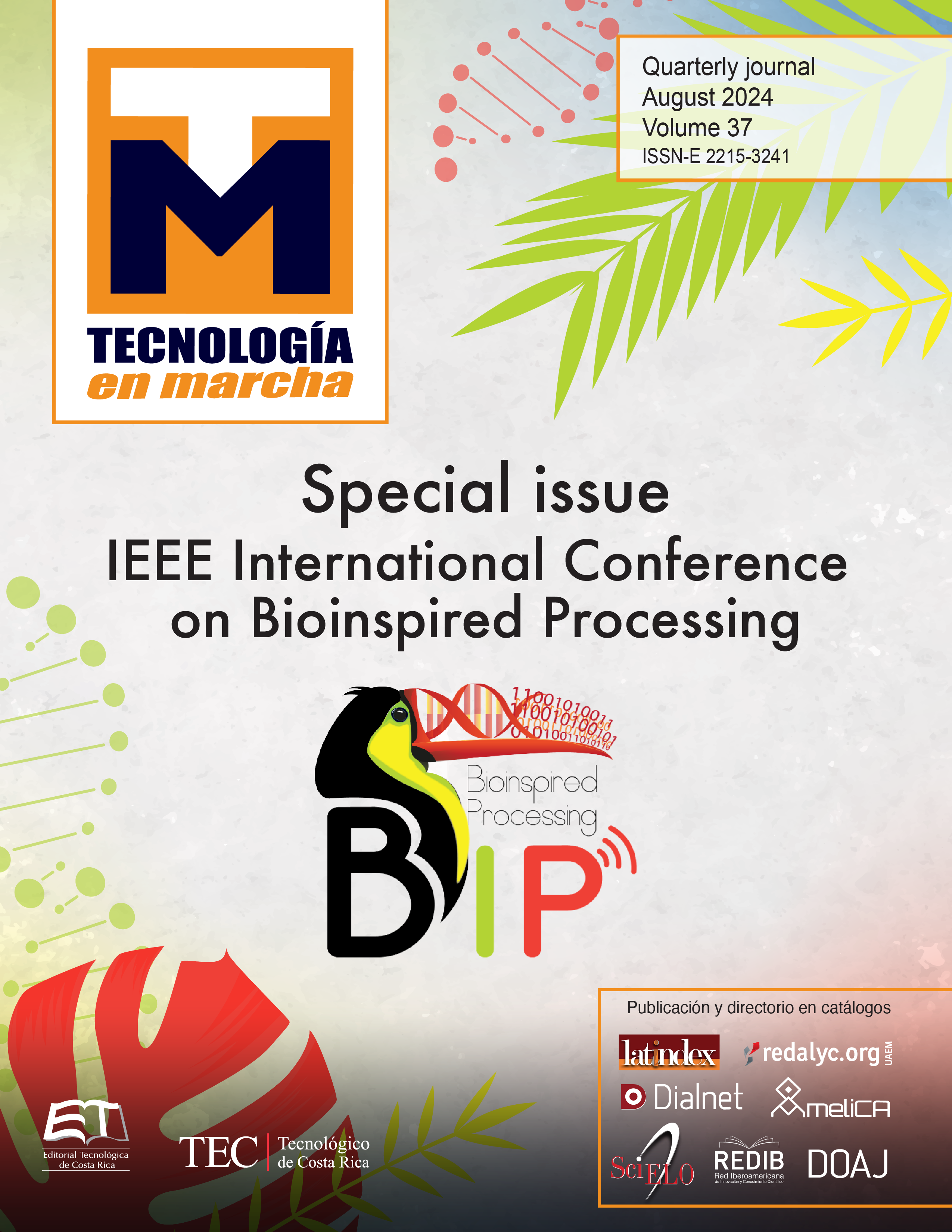Preliminary analysis of socioeconomic variable correlation with geospatial modeling in Costa Rica dengue epidemics
Main Article Content
Abstract
Dengue is a mosquito-transmitted disease that affects more than 5 million people worldwide.
It is endemic in more than 100 countries and it has presence in 5 continents. Understanding
the dynamics of dengue epidemics is crucial in reducing the massive public health impact
this disease has. However, dengue is a complex phenomenon. There are many variables that
contribute to the spread of the virus and the interconnection of those variables is not clear. We
set out to explore the correlation of socioeconomic variables in dengue epidemics by using a
geospatial model. Our study is centered in Costa Rica, a country with a repeated affectation
by the virus. We found a possible relationship between number of dengue cases and some
socioeconomic variables (dwellings with water pipes, location of work), which open the gates to
consider including them in a more sophisticated epidemiological model.
Article Details

This work is licensed under a Creative Commons Attribution-NonCommercial-NoDerivatives 4.0 International License.
Los autores conservan los derechos de autor y ceden a la revista el derecho de la primera publicación y pueda editarlo, reproducirlo, distribuirlo, exhibirlo y comunicarlo en el país y en el extranjero mediante medios impresos y electrónicos. Asimismo, asumen el compromiso sobre cualquier litigio o reclamación relacionada con derechos de propiedad intelectual, exonerando de responsabilidad a la Editorial Tecnológica de Costa Rica. Además, se establece que los autores pueden realizar otros acuerdos contractuales independientes y adicionales para la distribución no exclusiva de la versión del artículo publicado en esta revista (p. ej., incluirlo en un repositorio institucional o publicarlo en un libro) siempre que indiquen claramente que el trabajo se publicó por primera vez en esta revista.
References
G. Eason, B. Noble, and I. N. Sneddon, “On certain integrals of Lipschitz-Hankel type involving products of
Bessel functions,” Phil. Trans. Roy. Soc. London, vol. A247, pp. 529–551, April 1955.
World Health Organization, UNICEF, et al. Operational guide using the web-based dashboard: Early warning
and response system (ewars) fordengue outbreaks. 2020.
Ministerio de Salud. Situación epidemiológica dengue, chikungunya y zika del ministerio de salud. data
retrieved from: https://www.ministeriodesalud.go.cr/index. php/vigilancia-de-la-salud/analisis-de-situacion-desalud. 2021
Barrera R. Focks D. Dengue transmission dynamics: assessment and implications for control. In Report of the
scientific working group meeting on dengue, 1-5, pages 92–108. WHO, October 2006.
Rosen L. Rodhain F. Mosquito vectors and dengue virus-vector relation-ships. Dengue and dengue hemorrhagic fever, pages 45–60, 1997
Hwa-Lung Yu, Shang-Jen Yang, Hsin-Ju Yen, and George Christakos. A spatio-temporal climate-based model
of early dengue fever warning in southern taiwan. Stochastic Environ- mental Research and Risk Assessment,
(4):485–494, 2011
Christofer Åström, Joacim Rocklöv, Simon Hales, Andreas Béguin, Valerie Louis, and Rainer Sauerborn.
Potential distribution of dengue fever under scenarios of climate change and economic development.
Ecohealth, 9(4):448–454, 2012
Rachel Lowe, Bernard Cazelles, Richard Paul, and Xavier Rod ́o. Quantifying the added value of climate
information in a spatio-temporal dengue model. Stochastic Environmental Research and Risk Assessment,
(8):2067–2078, 2016.
Elodie Descloux, Morgan Mangeas, Christophe Eugène Menkes, Matthieu Lengaigne, Anne Leroy, Temaui
Tehei, Laurent Guillaumot, Magali Teurlai, Ann-Claire Gourinat, Justus Benzler, et al. Climate-based models
for understanding and forecasting dengue epidemics. PLoS neglected tropical diseases, 6(2):e1470, 2012.
Vivek Jason Jayaraj, Richard Avoi, Navindran Gopalakrishnan, Dhesi Baha Raja, and Yusri Umasa. Developing
a dengue prediction model based on climate in tawau, malaysia. Acta tropica, 197:105055, 2019.
M Hurtado-Díaz, H Riojas-Rodríguez, SJ Rothenberg, H Gomez-Dantés, and E Cifuentes. Impact of climate
variability on the incidence of dengue in Mexico. Tropical medicine & international health, 12(11):1327–1337,
Paola Vásquez, Antonio Loría, Fabio Sanchez, and Luis Alberto Barboza. Climate-driven statistical models as
efective predictions of local dengue indicence in costa rica: a generalized additive model and random forest
approach. Revista de Matemática: Teoría Y Aplicaciones, 27(1):1–21, 2020
Fabio Sanchez and Juan G Calvo. Dengue model with early-life stage of vectors and age- structure within host.
Revista de Matemática: Teoría y Aplicaciones, 27(1):157–177, 2020
Cory W Morin, Andrew C Comrie, and Kacey Ernst. Climate and dengue transmission: evidence and implications. Environmental health perspectives, 121(11-12):1264–1272, 2013.
Eric Delmelle, Michael Hagenlocher, Stefan Kienberger, and Irene Casas. A spatial model of socioeconomic
and environmental determinants of dengue fever in cali, colombia. Acta tropica, 164:169–176, 2016
Chris Brunsdon, A. Stewart Fotheringham and Martin E. Charlton. Geographically weighted regression: a
method for exploring spatial nonstationarity. Geographical analysis 28.4 (1996): 281-298.
Naqvi, Syed Ali Asad, et al. ”Integrating Spatial Modelling and Space–Time Pattern Mining Analytics for Vector
Disease-Related Health Perspectives: A Case of Dengue Fever in Pakistan.” International journal of environmental research and public health 18.22 (2021

